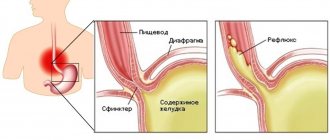What is hemophilus influenzae infection?
Haemophilus influenzae in medicine is called influenza infection. The disease most often affects the organs of the respiratory system and provokes a strong infectious inflammatory process. In some situations, other internal organs also suffer, and purulent foci form in them.
The causative agents are pathogenic bacteria of the hemoflux class. The source of infection is humans. The disease is accompanied by characteristic symptoms, for which it is important to consult a doctor promptly.
An initial examination will help the specialist make a preliminary diagnosis and send the patient for the most informative studies. The results obtained are taken into account when selecting a treatment regimen.
Categories
AllergistAnesthesiologist-resuscitatorVenereologistGastroenterologistHematologistGeneticGynecologistHomeopathDermatologistPediatric gynecologistPediatric dermatologistPediatric cardiologistPediatric ENTPediatric neurologistPediatric ophthalmologistPediatric pulmonologistPediatric rheumatologistPediatric urologistPediatric surgeonPediatric endocrinologistNutrologistImmunologistInfection specialist ist Cardiologist Clinical psychologist Cosmetologist Speech therapist ENT Mammologist Medical lawyer Narcologist Neuropathologist Neurosurgeon Nephrologist Nutritionist Oncologist Oncourologist Orthopedic traumatologist Ophthalmologist Parasitologist Pediatrician Plastic surgeon Proctologist Psychiatrist Psychologist Pulmonologist Rheumatologist Radiologist Reproductologist Sexologist-Andrologist Dentist Therapist RychologistUrologistPharmacistPhytotherapistPhlebologistPhysiatristSurgeonEndocrinologist
Reasons for appearance
There are numerous factors that create favorable conditions for the development of hemophilus influenzae infection after it enters the human body:
- bad habits (abuse of alcohol, tobacco products, narcotic substances);
- long-term treatment with certain antibacterial drugs;
- poor living conditions;
- prolonged stress, nervous overstrain, emotional outbursts;
- unfavorable ecological environment.
Hypothermia or high temperature are also provoking factors.
How does infection occur?
Haemophilus influenzae is an infection whose primary mode of transmission is airborne droplets. Infection occurs when the patient sneezes, coughs or talks, producing mucus or sputum.
In some situations, pathogenic pathogenic flora enters the human body through contact and household contact. We are talking about a towel, toys or dishes. A person is a source of infection from the moment of infection until complete recovery.
Haemophilus influenzae infection enters the human body through the nasopharynx. This is the latent stage when pathogenic flora develops within the ENT organs. Further, the body’s resistance decreases, and pathogenic bacteria grow. This is the manifest stage, when a viral infection occurs.
Hemophilus influenzae spreads throughout the body through the blood or lymph, entering various internal organs and provoking an inflammatory process. In severe situations, even bones and joints are affected. Once in the central nervous system, Haemophilus influenzae affects the meninges, causing the development of meningitis.
What diseases does it cause?
Haemophilus influenzae, penetrating the human body, causes certain pathological diseases:
- purulent arthritis;
- acute pneumonia;
- purulent meningitis;
- epiglottitis (a disease that is accompanied by an inflammatory process in the epiglottis);
- osteomyelitis;
- septicemia (a pathological condition in which blood poisoning occurs and weakness appears as a result of a developing inflammatory process);
- cellulite (subcutaneous fat tissue becomes inflamed).
Otitis, sinusitis, pericarditis, pleurisy are also a consequence of the development of Haemophilus influenzae in the human body. Each disease is accompanied by characteristic clinical symptoms.
There are also carriers of Haemophilus influenzae infection. The person feels well, there are no clinical signs, but he is dangerous to others. The carrier constantly releases pathogenic agents into the environment.
Risk group
Opportunistic microorganisms are always present in the body of a healthy person. They are harmless as long as, for example, the person’s immunity is strong. Against the background of its decrease, favorable conditions are created for the development of infection, so pathogens begin to multiply, which provokes the development of the inflammatory process.
Haemophilus influenzae is a serious and dangerous infection that often occurs in the following segments of the population:
- newborns;
- elderly people;
- persons who live in unfavorable living conditions;
- people with congenital or acquired immunodeficiency pathological conditions;
- children who attend kindergarten;
- persons suffering from chronic alcohol dependence.
Infection with Haemophilus influenzae also threatens patients who take cytostatics and children who are bottle-fed. The same applies to premature babies, preschool workers, and cancer patients. Children from orphanages are also at risk.
Symptoms for various diseases
The clinical picture of infection with Haemophilus influenzae depends on the type of disease provoked by pathogenic microorganisms:
- Purulent meningitis. The lining of the brain becomes inflamed. Pathology is most often diagnosed in children under 5 years of age. Purulent meningitis is accompanied by the following symptoms:
- the temperature rises sharply, which is accompanied by chills;
- severe headache appears;
- a person is worried about painful nausea;
- muscles and joints hurt;
- psychomotor agitation appears;
- human consciousness is disrupted;
- stiffness of the muscles in the back of the head occurs;
- the upper eyelid droops;
- strabismus appears.
- Pneumonia. The disease is characterized by pneumonia and is accompanied by the following symptoms:
- body temperature rises;
- sore throat;
- sweating increases;
- a person is worried about general weakness, weakness;
- appetite worsens;
- a small amount of sputum is released;
- shortness of breath appears after minor physical exertion and at rest;
- an intense cough bothers you;
- I am worried about severe pain in the chest area when inhaling.
- Haemophilus influenzae sepsis . It is more often diagnosed in newborns, in particular in those who are on artificial nutrition. The symptoms of the disease are as follows:
- body temperature rises sharply;
- severe chills appear;
- the body is covered with dark burgundy rashes;
- appetite worsens;
- stool is disturbed;
- there are problems with sleep, insomnia bothers you;
- internal organs are affected by purulent foci;
- Septic shock develops, which leads to death.
- Hemophilic cellulitis. The disease most often manifests itself on the face, rarely affecting the lower or upper extremities. The pathological condition is characterized by the following symptoms:
- slight weakness appears;
- body temperature rises;
- headache occurs;
- sore throat bothers you;
- stuffy nose;
- the eye and cheek swell;
- the skin first acquires a red tint, then bluish.
- Epiglottitis. A severe inflammatory process affects the epiglottic cartilage. The disease is characterized by the following clinical symptoms:
- signs of severe intoxication of the body appear;
- body temperature rises;
- fever occurs;
- apathy towards the surrounding world appears;
- breathing becomes noisy;
- the upper and lower extremities are warm, but the skin acquires a bluish tint;
- respiratory failure worsens.
- Purulent arthritis . The pathology is characterized by a strong inflammatory process, which is provoked by pyogenic microorganisms. The disease is accompanied by the following symptoms:
- fever appears;
- general weakness occurs in the body;
- worries about muscle pain and headache;
- the skin swells;
- local temperature rises;
- mobility in the affected joint is limited.
The incubation period is different in each case, depending on the person’s immunity, but more often 2-4 days pass between infection of the body and the appearance of the first signs.
Diagnostics and tests
Haemophilus influenzae is a dangerous disease, the main and most informative diagnostic method for which is bacteriological culture. The taken material is placed in a suitable environment and the development of pathogenic bacteria is observed.
Taking into account the pathologies that occur when infected with Haemophilus influenzae, specialists take the following types of material for research:
- sputum from the lungs (with the development of bronchitis, pneumonia);
- joint fluid (with the development of arthritis);
- cerebrospinal fluid (with the development of meningitis);
- purulent discharge (with the development of pneumonia, purulent infectious diseases);
- mucus (if the upper respiratory tract is affected).
Patients suspected of being infected with Haemophilus influenzae are also prescribed additional diagnostic tests:
- Blood analysis. Plasma is examined, in which specialists identify the DNA of disease pathogens.
- Polymerase chain reaction (PCR). A diagnostic method that allows you to determine the DNA of pathogenic microflora in the patient’s blood.
- Serological tests. The blood is examined for antibodies to the pathogens of Haemophilus influenzae.
Haemophilus influenzae under a microscope
Instrumental diagnostic methods (radiography, ultrasound, magnetic resonance imaging, computed tomography) help determine the complications of an infectious lesion of the body. It is important to differentiate infection with Haemophilus influenzae, since many symptoms are similar to other manifestations of numerous diseases.
Research result
The result of the study of microbiology is recorded on a special form. For proper decoding, characteristic values are needed. The name of the bacterium consists of two Latin words meaning the genus and variety of pathogenic microorganism.
The number of bacterial cells, indicated in special colony-forming units, is written next to the name. After determining the concentration of bacteria, they proceed to designate its pathogenicity - “relatively pathogenic flora.”
Everyone has microorganisms living on the mucous membrane of the nasopharynx; they perform the function of protecting microorganisms; they cannot cause harm and do not stimulate the formation of inflammation. Under the influence of negative endogenous and exogenous conditions, the number of microorganisms rapidly increases, which leads to the formation of pathology.
Normally, the content of microorganisms in the nasal cavity and pharynx should not exceed 104 CFU/ml, and there should be no pathogenic microorganisms at all. Only a doctor can determine the presence of the pathogen and decipher the analysis. The doctor will prescribe treatment and, if necessary, prescribe medications that relieve inflammation, as well as substances against bacteria.
Types of results studied:
- A negative result of microflora culture means there are no fungal pathogens at all. The pathology factor is considered to be viruses, not microorganisms or fungi.
- A positive result is that there is an increase in pathogenic or relatively pathogenic microorganisms that can provoke an acute inflammatory process, an acute infectious disease caused by diphtheria bacteria, and pertussis. With an increase in fungal flora, thrush is formed in the oral cavity, the activator of which is considered to be bioagents of the third category of pathogenicity - fungi of the Candida family.
Microbiological study makes it possible to establish the variety of microorganisms, numerical correspondence, and also prescribe competent and effective treatment for children and adults. Despite the adaptation of the infection to drugs, there are also new developments that affect current strains of viruses.
Vaccination
Influenza infection is prevented by vaccination. It is better to prevent a disease with a vaccine than to treat it. Haemophilus influenzae is difficult to treat and in most cases leads to serious complications.
Various vaccines are used for prevention:
| Name | Description |
| Act-HIB | Vaccination made in France. It contains the capsular polysaccharide of Haemophilus influenzae type B. To develop immunity, it is allowed to be administered to a person from 2 months of age. |
| Pentaxim | Vaccine for the prevention of diphtheria, tetanus, whooping cough, polio, infection caused by Haemophilus influenzae type B. |
| Infanrix Hexa | Vaccination made in Belgium. The Infanrix Hexa vaccine is indicated for primary and booster immunization of children to prevent diphtheria, tetanus, whooping cough, hepatitis B, and polio. |
Haemophilus influenzae has a specific prevention - this is a vaccination. It helps reduce not only the incidence rate, but also the carriage of pathogens.
Vaccination is carried out in several stages:
- The first vaccination is given to a child at 3 months.
- The second injection is given at 5 months of age.
- The next vaccination is given after six months.
- The last time a child is vaccinated is at 1.5 years.
A pediatrician will help you choose a vaccination, taking into account the condition of the little patient and the individual characteristics of his body.
Prevention
Currently, specific prevention of hemophilus influenzae infection has been developed and introduced into the practice of clinicians. Timely vaccination is the optimal means of protection against infections caused by this pathogen. The vaccine consists of fragments of a bacterial capsule and does not contain a live pathogen. Due to this, it is administered to children and people with reduced immunity.
There are several foreign and domestic vaccines:
- "Akt-Hib"
- "Hiberix"
- "Pentaxim"
- "Infanrix Hexa"
- “Haemophilus influenzae type b conjugate dry vaccine.”
The vaccines listed above have been licensed. A specific drug name is used against each type of Haemophilus influenzae. The vaccine is given to children under 5 years of age, as well as to persons at risk.
Nonspecific prevention consists of strengthening the immune system. Emergency prevention is carried out after contact with a sick person. To do this, doctors recommend taking a course of antibiotics.
How to treat hemophilus influenzae?
Therapy for the disease caused by Hemophilus influenzae is selected by the doctor after conducting a comprehensive medical diagnosis. The patient is prescribed medications, taking into account the results of the study, the degree of development of pathological processes and the individual characteristics of the body. The patient is prescribed bed rest and proper nutrition.
The treatment regimen involves the use of the following drugs:
| Group of drugs | Name | Application |
| Antibacterial agents | Augmentin, Emoxilav | The drugs act directly on the causative agents of the disease. The dosage of the medicine depends on the patient’s body weight and the degree of development of pathological processes. Adults are prescribed 1 tablet (125, 500, 875/125 mg) 2-3 times a day. The course of therapy lasts 5-14 days. |
| Antipyretic drugs | Nurofen, Paracetamol | The medicine reduces the inflammatory process. The drug should be taken orally with a sufficient amount of water. The adult dosage is 1 capsule. Between doses it is necessary to maintain a certain time interval, at least 4 hours. The maximum daily dosage is 1200 mg. |
| Expectorants | Ambroxol, ACC | The medicine is taken orally after meals with a small amount of water. Adults are prescribed to take 30 mg 3 times a day for the first 3 days. On day 4 it is recommended to take 30 mg 2 times a day. The course of treatment is 4-5 days without consulting a doctor. |
| Immunomodulators | Lykopid, Imunorix | The medicine is taken orally before meals 30 minutes. The standard dosage for adults is 1-2 mg once a day. The course of treatment lasts 10 days. |
| Diuretics | Furosemide, Hypothiazide | The drug has a diuretic effect, eliminates edema, which can cause serious consequences (cerebral edema, arterial hypertension). Adults are recommended to take 40 mg 1 time per day. |
| Antihistamines | Zyrtec, Zodak | The dosage and treatment regimen of the drug depends on the patient’s condition. Adults are prescribed 5-10 mg 1 time per day. The course of therapy is determined by the doctor, taking into account the disease. |
In emergency situations, when the body is severely intoxicated, the patient is administered detoxification solutions. Additionally, vitamin complexes are prescribed to increase and strengthen the defenses.
Treatment
Hemophilus influenzae can be treated using conservative methods. A child or adult is shown:
- compliance with bed rest;
- avoiding salty foods and drinking plenty of fluids;
- taking antibacterial agents - often antibiotics are taken for no longer than two weeks;
- introduction of detoxification solutions;
- the use of medications to relieve symptoms, in particular antipyretics, expectorants and vasoconstrictors;
- the use of vitamin complexes and immunomodulators.
Surgical intervention for influenza infection is not provided.
Therapy for complications
Haemophilus influenzae is a serious infection that entails dangerous complications; they also require specially selected therapy.
Treatment in most cases is carried out with antibacterial agents:
| Name | Application | Contraindications |
| Rifampicin | It is recommended to take the medicine 30 minutes before meals. The adult dosage is 0.45-0.6 g per day. Capsules can be taken morning and evening. |
|
| Cefuroxime | The medicine is administered intramuscularly or intravenously. Adults are prescribed 0.75 g 3 times a day. |
|
It is important not only to eliminate the underlying disease, but also the complications after it. Medicines are selected by an infectious disease doctor, taking into account the patient’s condition.
Treatment
Once the pathogen is isolated, treatment can begin. Depending on the location of the organ affected by the hemophilus influenzae, the age of the patient and several other factors, the doctor prescribes therapy. Treatment may have certain difficulties, because the microbe is very resistant to many antibiotics. In general, therapy includes several activities:
- Organizational and regime. If Haemophilus influenzae is found in a child’s throat, then his condition is assessed. In severe and moderate forms of infection, both the child and the adult are hospitalized in the hospital for the entire febrile period. During this time, bed rest with plenty of fluids is prescribed.
- Etiotropic antibacterial therapy. It is prescribed even before laboratory tests to exclude possible complications. In severe cases of infection, 3rd and 4th generation cephalosporins, ampicillin, aminoglycosides and carbapenems are indicated.
- Symptomatic therapy. Includes drugs from the group of antipyretics, expectorants, vasoconstrictors, and antibacterials.
Possible complications, why infection is dangerous
The lack of timely diagnosis and properly selected therapy entails serious consequences, including death.
| Name | Description |
| Brain swelling | Complication in the development of meningitis. In most cases it results in death. |
| Acute respiratory failure | A serious consequence of Haemophilus influenzae infection, which increases the risk of developing pneumonia. |
| Asphyxia | The pathological condition is characterized by obstruction of the respiratory tract. It is a consequence of damage to the ENT organs. Provokes acute respiratory failure, as a result of which the patient dies. |
Complications of hemophilus influenzae also include infectious-toxic shock, osteomyelitis and mental disorders. The same applies to persistent decrease in visual acuity, sepsis and hearing loss. In pregnant women, the presence of pathogenic bacteria provokes spontaneous miscarriage and the development of defects that are dangerous for the child.
The main protection against Haemophilus influenzae is the vaccine. This is a dangerous infection that is more often diagnosed in children at an early age. Therefore, it is important to vaccinate your child in order to protect his body from serious pathologies that develop during infection.
Types of throat swabs
Depending on the purpose of the study, different swabs are made from the throat and nose - for microflora, viruses, sensitivity to antibiotics. When applying for a job, swabs are taken for flora from the throat - diphtheria, staphylococci, streptococci. In case of chronic stomatitis and tonsillitis, an extended analysis is taken, which reveals UPF and pathogenic microflora.
Staphylococcus test
Staphylococcus aureus, or Staphylococcus aureus, is a representative of opportunistic microflora. The norm of staphylococcus in a smear from the throat or nose does not exceed 1x103 CFU/ml. A larger amount of the microbe provokes inflammation of the oropharynx and sinuses.
Indications for staphylococcus smear
Throat swabs for staphylococcus are taken during frequent exacerbations of diseases of the ENT organs:
- tonsillitis;
- angina;
- sinusitis;
- stomatitis.
A throat swab is carried out during employment and regular medical examinations. The analysis is also indicated for the diagnosis of whooping cough and diphtheria.
How many days does a throat swab take?
The analysis is done by inoculating mucus taken from the nasopharynx onto a nutrient medium. The activity of staphylococcus is judged by the number of grown colonies.
For microflora and sensitivity to antibiotics
In addition to swabs from the throat and nose for staphylococcus, there are more extensive tests. If diseases of the ENT organs occur, swabs are taken from the throat and nose to test microflora and sensitivity to antibiotics. This analysis allows you to determine the diagnosis and select effective treatment.
How long to wait for the result of a throat and nasal swab
Most tests for bacteria and fungi are done by culture. Therefore, you will have to wait from 3 to 7 days for a response. Express tests are done using the PCR method. It’s faster, the answer will be ready within 24 hours.
Normal indicators
For conditionally pathogenic microflora, the normal content is 1x103-1x104 CFU/ml. UPF representatives include:
- Staphylococcus aureus;
- streptococcus;
- klebsiella pneumoniae - only for throat swab;
- candida mushrooms;
- Pneumococcus.
If the number of these bacteria exceeds the norm, inflammation develops.
Streptococcus
Representative of opportunistic microflora. Normal content is up to 1x103 CFU/ml. When activated, it causes tonsillitis and scarlet fever.
Candida fungi
Present on the oral mucosa of healthy people. The proliferation of fungi causes candidiasis, or thrush. This disease is manifested by the formation of cheesy deposits on the mucous membrane of the tongue and tonsils.
Neisseria and pneumococcus
Causes sinusitis, stomatitis, tonsillitis. Pneumococcus is able to descend into the lower respiratory tract, where it becomes the cause of bronchitis and pneumonia.
Whooping cough stick
A pathogenic microorganism is absent in a healthy person. Causes the disease whooping cough. The rod is detected by culture or using PCR. This test is performed to diagnose whooping cough.
Diphtheria bacillus
A pathogenic microorganism that causes the severe disease diphtheria. There is such a condition as being a carrier of diphtheria bacillus. Such a person has no symptoms of the disease, but he can infect other people. The diphtheria bacillus is also called Loeffler's bacillus, named after the scientist who discovered it. The abbreviation of the name is bl, bl.
Taking swabs from the throat and nose for bl is indicated if diphtheria is suspected. A swab for diphtheria from the throat and nose is also done to exclude asymptomatic carriage of the infection. The analysis is taken during employment and during preventive medical examinations.
Haemophilus influenzae
A bacterium that causes severe respiratory diseases in young children. Previously, Haemophilus influenzae was called influenza and was believed to be the cause of influenza.
Hemolytic streptococcus
This microbe causes severe sore throats and pneumonia. It is a pathogenic organism and should not be present on the oral or nasal mucosa of healthy people.
What indicators are dangerous
Detection of some microorganisms in a smear requires emergency treatment:
- diphtheria bacillus;
- whooping cough stick;
- hemophilus influenzae;
- hemolytic streptococcus.
Even asymptomatic carriage of these bacteria requires treatment with antibiotics. If a large number of UPFs are detected, treatment is carried out based on the severity of symptoms.
Virus smear
Viruses can only be detected by PCR. The following viruses are detected:
- herpes simplex;
- herpes type 6;
- cytomegalovirus;
- Epstein-Barr;
- human papillomas.
Detection of these viruses does not in itself require treatment. It is prescribed only if appropriate symptoms are present.











